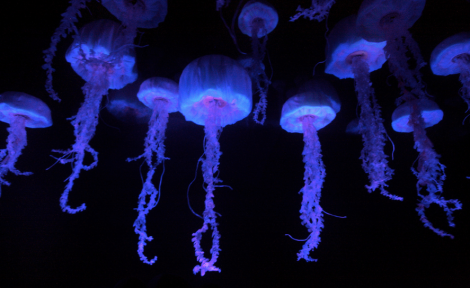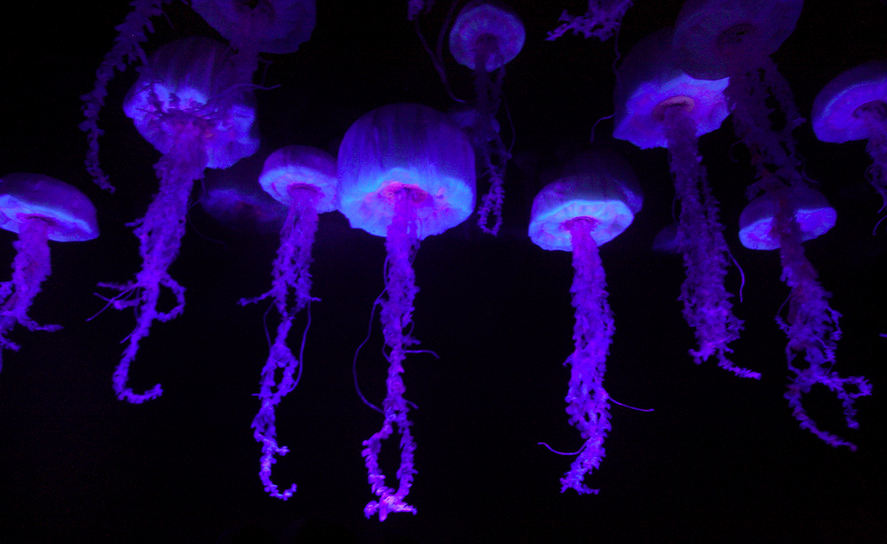
Sam HowzitNo eyes, no brain, no problem KILLING EVERYONE.
Jellyfish are killers … and they’re coming for us. If you don’t believe it, this review of Lisa-ann Gershwin’s book Stung! On Jellyfish Blooms and the Future of the Ocean will convince you — and FREAK YOU OUT. Oh, you thought zombies were scary? Jellyfish zombies are actually real:
One kind of jellyfish, which might be termed the zombie jelly, is quite literally immortal. When Turritopsis dohrnii “dies” it begins to disintegrate … But then something strange happens. A number of cells escape the rotting body. These cells somehow find each other, and reaggregate to form a polyp. All of this happens within five days of the jellyfish’s “death,” and weirdly, it’s the norm for the species.
(So that Walking Dead spinoff is probably called Swimming Dead.)
If you need more proof jellyfish will be our post-apocalyptic overlords, Tim Flannery breaks it down:
- Climate change is expected to actually help jellyfish (they like toasty warm oceans), and then jellyfish in turn could speed climate change, because carbon dioxide-producing bacteria love their poop.
- Jellyfish need less oxygen than other sea life, so they aren’t bothered by waters choked, say, by molasses.
- Unlike oysters or snails, jellyfish don’t really care that oceans are getting more acidic, since they don’t have shells.
- Jellyfish are SO SCARY that Congress passed the Jellyfish Control Act in 1966 to study their effects on other sea life.
On the plus side, sometimes the squishy ones band together to take down nuclear power plants. Writes Flannery:
Japan’s nuclear power plants have been under attack by jellyfish since the 1960s, with up to 150 tons per day having to be removed from the cooling system of just one power plant. Nor has India been immune. At a nuclear power plant near Madras, workers removed and individually counted over four million jellyfish that had become trapped on screens placed over the entrances to cooling pipes between February and April 1989. That’s around eighty tons of jellyfish.
As Gershwin says, “Jellyfish have an uncanny knack for getting stuck … Imagine a piece of thin, flexible plastic wrapper in a pool, where it can drift almost forever without sinking, until it gets sucked against the outflow mesh.”
I guess jellyfish aren’t ALL bad … but stock up on water wings, just in case.



